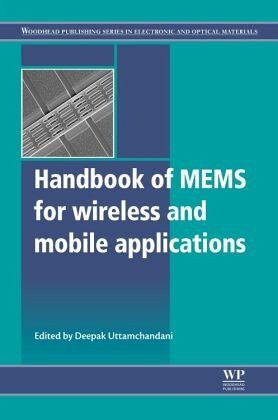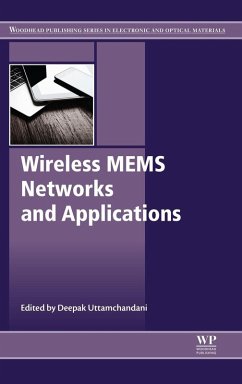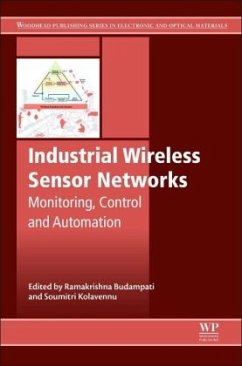
Handbook of Mems for Wireless and Mobile Applications

PAYBACK Punkte
104 °P sammeln!
The increasing demand for mobile and wireless sensing necessitates the use of highly integrated technology featuring small size, low weight, high performance and low cost: micro-electro-mechanical systems (MEMS) can meet this need. The Handbook of MEMS for wireless and mobile applications provides a comprehensive overview of radio frequency (RF) MEMS technologies and explores the use of these technologies over a wide range of application areas.Part one provides an introduction to the use of RF MEMS as an enabling technology for wireless applications. Chapters review RF MEMS technology and appl...
The increasing demand for mobile and wireless sensing necessitates the use of highly integrated technology featuring small size, low weight, high performance and low cost: micro-electro-mechanical systems (MEMS) can meet this need. The Handbook of MEMS for wireless and mobile applications provides a comprehensive overview of radio frequency (RF) MEMS technologies and explores the use of these technologies over a wide range of application areas.
Part one provides an introduction to the use of RF MEMS as an enabling technology for wireless applications. Chapters review RF MEMS technology and applications as a whole before moving on to describe specific technologies for wireless applications including passive components, phase shifters and antennas. Packaging and reliability of RF MEMS is also discussed. Chapters in part two focus on wireless techniques and applications of wireless MEMS including biomedical applications, such as implantable MEMS, intraocular pressure sensors and wireless drug delivery. Further chapters highlight the use of RF MEMS for automotive radar, the monitoring of telecommunications reliability using wireless MEMS and the use of optical MEMS displays in portable electronics.
With its distinguished editor and international team of expert authors, the Handbook of MEMS for wireless and mobile applications is a technical resource for MEMS manufacturers, the electronics industry, and scientists, engineers and academics working on MEMS and wireless systems.
Part one provides an introduction to the use of RF MEMS as an enabling technology for wireless applications. Chapters review RF MEMS technology and applications as a whole before moving on to describe specific technologies for wireless applications including passive components, phase shifters and antennas. Packaging and reliability of RF MEMS is also discussed. Chapters in part two focus on wireless techniques and applications of wireless MEMS including biomedical applications, such as implantable MEMS, intraocular pressure sensors and wireless drug delivery. Further chapters highlight the use of RF MEMS for automotive radar, the monitoring of telecommunications reliability using wireless MEMS and the use of optical MEMS displays in portable electronics.
With its distinguished editor and international team of expert authors, the Handbook of MEMS for wireless and mobile applications is a technical resource for MEMS manufacturers, the electronics industry, and scientists, engineers and academics working on MEMS and wireless systems.













